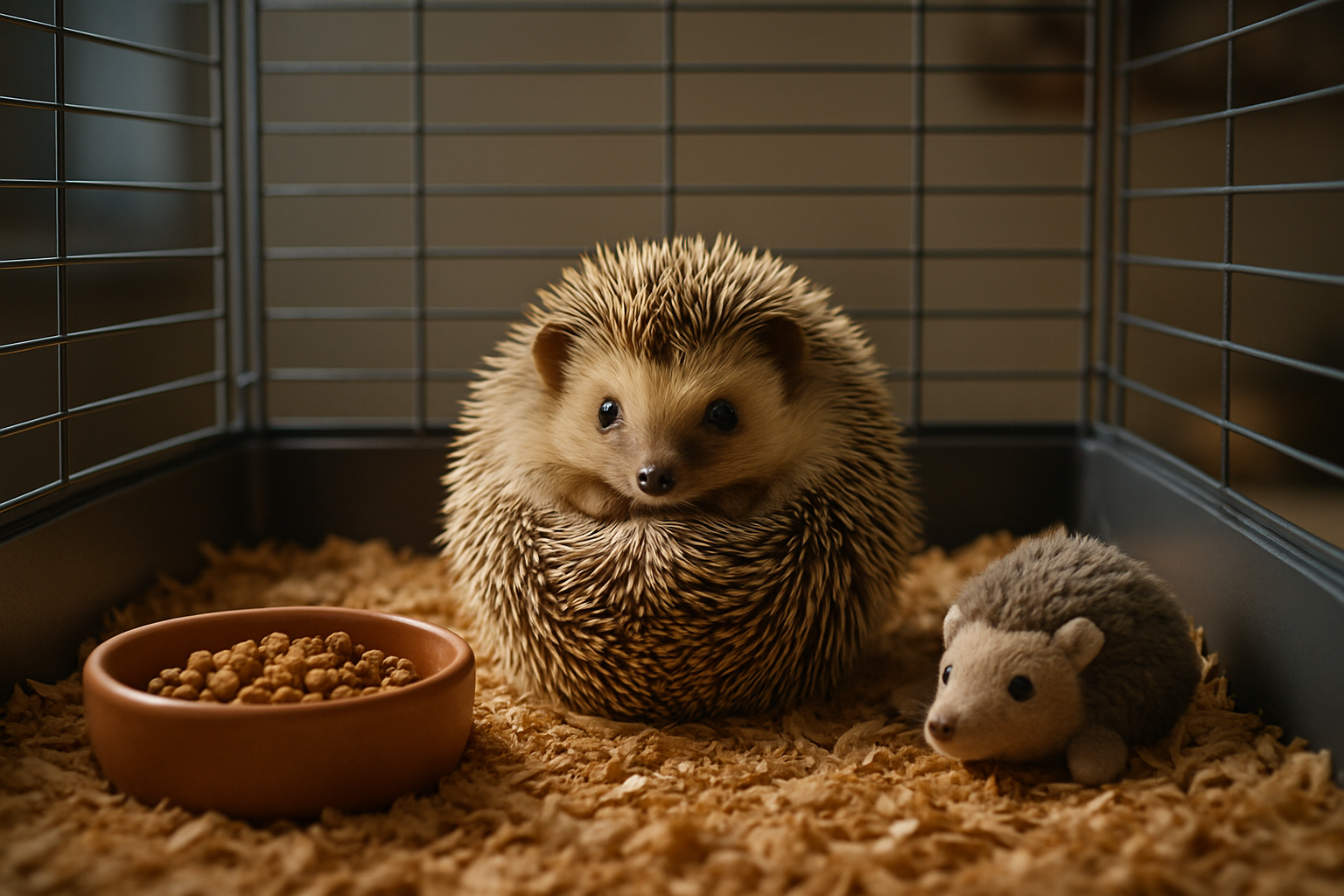Hedgehogs: Prickly Pets with Peculiar Personalities
In the realm of unconventional pets, hedgehogs have emerged as quirky companions, captivating animal enthusiasts with their spiny exteriors and endearing behaviors. These nocturnal creatures, once primarily known as garden visitors in Europe, have now found their way into homes worldwide, offering a unique blend of cuteness and curiosity. As their popularity soars, understanding the intricacies of hedgehog care and their distinctive traits becomes increasingly important for potential owners and animal lovers alike.

This process of domestication has led to the development of hedgehogs more suited to human companionship, with traits such as increased docility and a wider range of color patterns. However, it’s important to note that even domesticated hedgehogs retain many of their wild instincts, making them a unique challenge for pet owners.
The Hedgehog’s Unique Anatomy
One of the most distinctive features of hedgehogs is their spiny coat, which serves as their primary defense mechanism. These spines, or quills, are actually modified hairs made of keratin, the same protein found in human nails. Unlike porcupine quills, hedgehog spines are not barbed and do not easily detach from the body.
Hedgehogs possess the ability to curl into a tight ball when threatened, using their circular muscle, called the orbicularis muscle, to contract and present a prickly exterior to potential predators. This defense mechanism, combined with their nocturnal nature, has allowed hedgehogs to survive in various habitats for millions of years.
Hedgehog Behavior and Personality Traits
Despite their prickly exterior, hedgehogs can develop surprisingly affectionate relationships with their human caretakers. They are generally solitary animals, preferring to live alone rather than in groups. This solitary nature translates to their interactions with humans, often requiring patience and consistent handling to build trust.
Hedgehogs are known for their curious nature, often exploring their surroundings with great interest. They have poor eyesight but compensate with an excellent sense of smell and hearing. One of the most endearing behaviors of hedgehogs is self-anointing, a peculiar action where they produce foamy saliva and spread it over their quills. While the exact purpose of this behavior is not fully understood, it’s believed to serve as a form of scent-marking or self-defense.
The Challenges of Hedgehog Care
Caring for a hedgehog as a pet presents unique challenges that potential owners must carefully consider. One of the primary considerations is their dietary needs. In the wild, hedgehogs are insectivores, feeding primarily on insects, worms, and occasionally small vertebrates. Replicating this diet in captivity requires a combination of specially formulated hedgehog food, high-quality cat food, and live insects such as mealworms and crickets.
Housing a hedgehog properly is another crucial aspect of their care. They require spacious enclosures with plenty of room to explore and exercise. The habitat should include a hiding place, a wheel for exercise, and various toys for enrichment. Temperature control is vital, as hedgehogs are susceptible to hypothermia and require ambient temperatures between 72-80°F (22-27°C).
Legal Considerations and Ethical Concerns
The legality of owning a hedgehog as a pet varies significantly across different regions. In some areas, hedgehog ownership is completely prohibited, while in others, it may require special permits. Potential owners must research local regulations thoroughly before considering a hedgehog as a pet.
From an ethical standpoint, the rise in hedgehog popularity has raised concerns about the welfare of these animals in captivity. Critics argue that the nocturnal nature and specific needs of hedgehogs make them ill-suited for life as domestic pets. Additionally, there are concerns about the breeding practices used to produce pet hedgehogs, particularly regarding genetic diversity and potential health issues.
The Future of Hedgehogs as Pets
As interest in exotic pets continues to grow, the future of hedgehogs in the pet trade remains a topic of debate. While their unique appearance and personalities make them appealing to many, the specialized care they require limits their suitability for many potential owners.
Research into hedgehog health and behavior in captivity is ongoing, with veterinary professionals and animal behaviorists working to improve care standards and address health concerns specific to pet hedgehogs. This includes efforts to develop better nutrition guidelines, enhance enrichment strategies, and understand the long-term effects of captivity on these naturally wild animals.
In conclusion, hedgehogs represent a fascinating intersection of wild animal behavior and human companionship. Their rise as pets highlights our enduring fascination with unique and unconventional animals. As we continue to learn more about these prickly yet charming creatures, it’s crucial to approach hedgehog ownership with a deep understanding of their needs and a commitment to providing the best possible care. Whether as pets or wild animals, hedgehogs undoubtedly hold a special place in the diverse tapestry of the animal kingdom, captivating us with their peculiar personalities and primitive charm.





